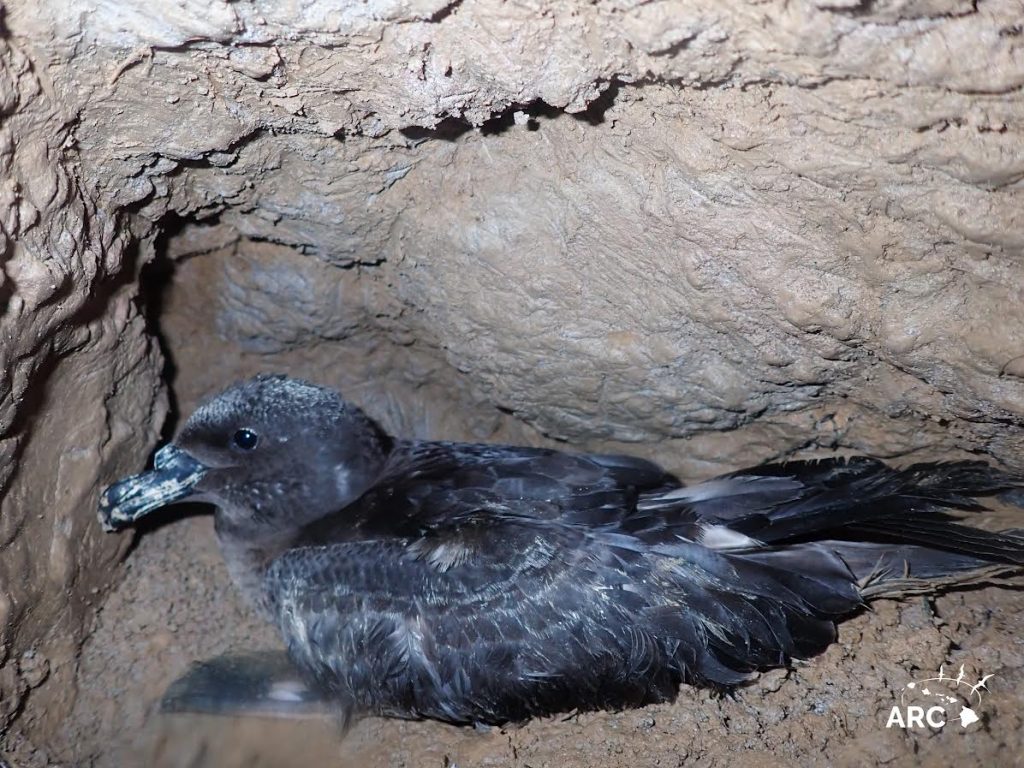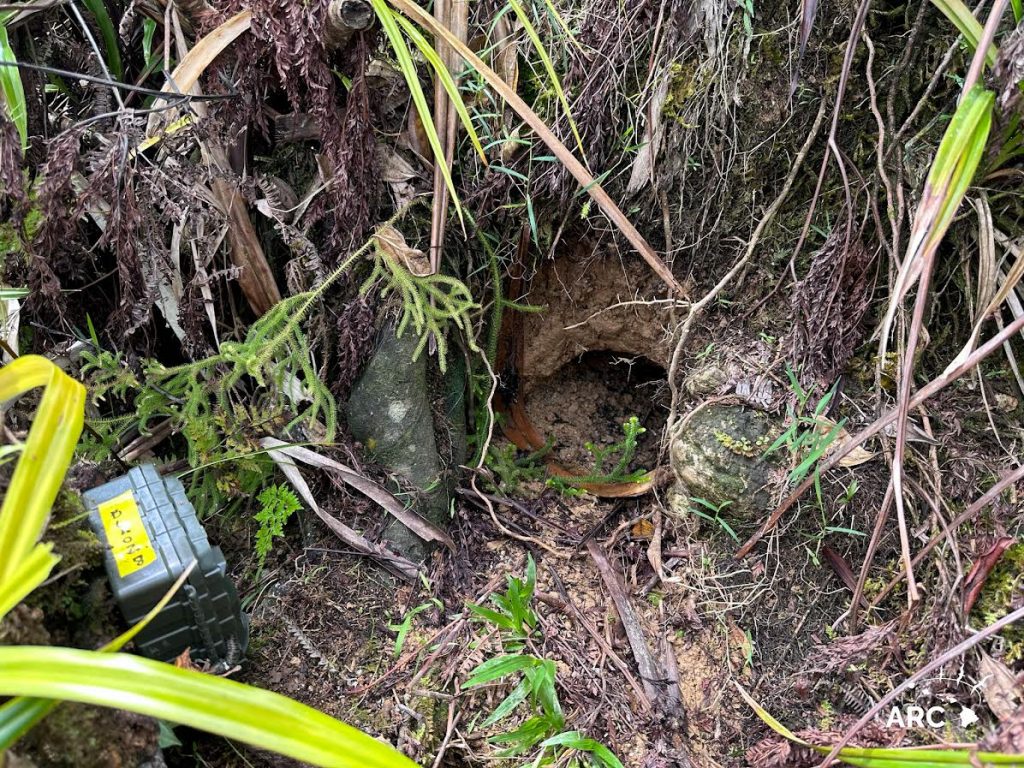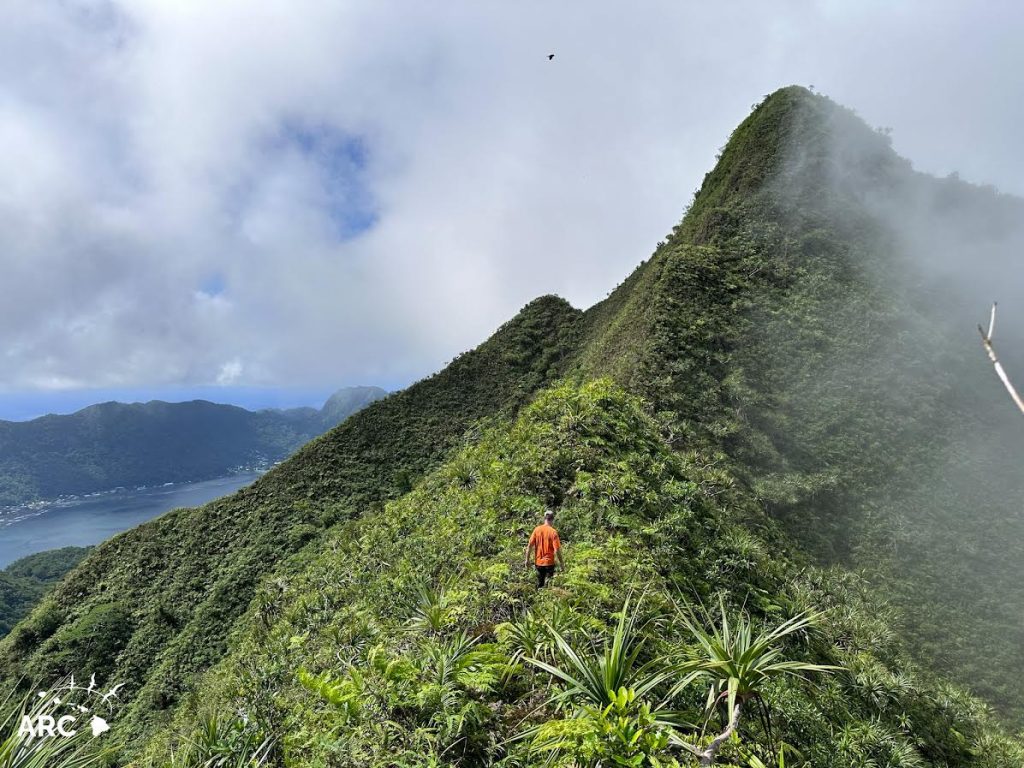Hawaiʻi-based team discovers rare seabird nests in American Sāmoa for first time in almost 40 years

Four active burrows of the rare Taʻiʻo (Tahiti Petrel Pseudobulweria rostrata) were discovered on two separate mountain peaks on Tutuila, American Sāmoa last month—the first time burrows of this species have been found on the island since 1986.
The burrows were discovered by researchers from Hawaiʻi-based Archipelago Research and Conservation working in collaboration with US Fish and Wildlife Service, Department of Marine and Wildlife Resources, Conservation Metrics and the National Park Service.
A poorly known seabird species, the Tahiti Petrel is classified as Near Threatened by the International Union for the Conservation of Nature’s Red List of threatened species, due to several factors including introduced predators (such as cats, dogs and rats), light attraction and threats at sea.
While a small number of fledgling birds are found in villages on Tutuila every year after being attracted to lights, the only location where birds were thought to breed was Rainmaker Mountain (although this had not been confirmed) as well as a known colony on the nearby island of Ta’u.
The team have been working to locate Tahiti Petrel colonies on Tutuila since 2020, deploying recording devices in potential breeding habitat on mountains to listen for their distinctive calls, using night vision and thermal cameras to locate the birds at night, and conducting ground surveys for burrows.
Dr André Raine, science director for Archipelago Research and Conservation, said “As a rare seabird species that only visits the most remote and densely vegetated mountain tops of islands at night, this is a very challenging bird to study. This was made even more difficult because the start of our research project coincided with the beginning of the COVID-19 pandemic. When we discovered four active burrows of this incredible seabird on two different mountain tops on Tutuila last month, it was more than we could have ever hoped for!”
The burrows were found on steep and densely vegetated slopes on both Pioa (Rainmaker) and Matafao mountains. Two of the burrows contained a small chick and the other two had an adult bird inside.
During fieldwork, the team also identified several breeding colonies of another nocturnal seabird species, the Tropical Shearwater (Puffinus bailloni) – including the locations of multiple colonies not recorded on the island previously.
The team placed cameras at each of burrows to monitor the birds’ activity, and footage has already been recovered from one of them. These cameras will allow the researchers to obtain a better understanding of when the birds visit nest sites and when the chicks fledge. The cameras will also provide the team with information on predators visiting burrows.
Unfortunately, two predated Tahiti Petrels were also found in the area, highlighting the impact of non-native introduced predators such as cats and rats.
Funding for the project came from four US Fish and Wildlife Service programs (Coastal, Migratory Birds, Endangered Species Recovery, and Refuges Inventory and Monitoring) and the National Fish and Wildlife Foundation.
“We were very pleased and honored to be a part of the unexpected discovery of these nest sites by our partners at ARC. Documentation of their breeding habitat will undoubtedly inform future conservation activities for this Bird of Conservation Concern.” said Roberta Swift from the US Fish and Wildlife Service Migratory Birds Program.















